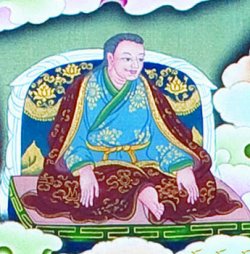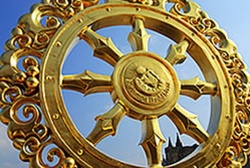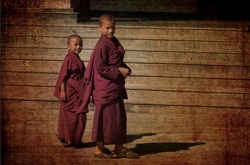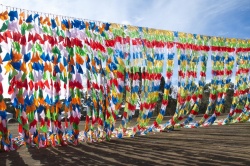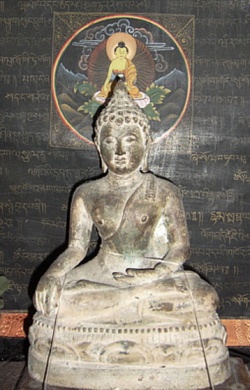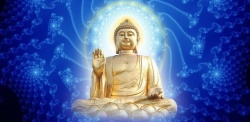Khon Konchog Gyalpo lifestory
Khön Könchok Gyalpo (Wyl. 'khon dkon mchog rgyal po) (1034-1102) — a descendant of the Khön family and founder of the Sakya school and Sakya Monastery in 1073, and its first throneholder.
His root teacher was Drokmi Lotsawa.
Khon Konchog Gyalpo (1034-1102) 1st Sakya Trizin
Sakya Trizin ( literally “Sakya Throne Holder”) is the traditional title of the head of the Sakya Order of Tibetan Buddhism.
The Sakya Order of Tibetan Buddhism was founded in 1073, when Khon Konchog Gyalpo (a.k.a. Kön Gönqog Gyäbo), a member of Tibet’s noble Khön (Koin) family, established a monastery in the region of Sakya, Tibet, which became the headquarters of the Sakya Order of Tibetan Buddhism.
Since that time, the leadership of the Sakya Order has descended within the Khön family.
Khon Konchok Gyelpo ('khon dkon mchog rgyal po) was born in Yarlung Khardab (g.yar lung mkhar stabs) in 1034, although some sources have the birth year as 1024 (the wood mouse instead of the wood dog year).
He was a member of the Khon family, a descendent of Khon Liu Wangpo ('khon lu'i dbang po), who was one of the “seven men who were tested,” the Semi Midun (sad mi mi bdun), the first seven men to ordain under Śāntarakṣita in the eighth century.
His father was Shākya Lodro (shAkya blo gros), who may have been murdered by Ra Lotsāwa Dorje Drak (rwa lo tsA ba rdo rje grags, 1016-1198). His elder brother, Sherab Tsultrim (shes rab tshul khrim), a celibate layman, was a disciple of the Eastern Vinaya monk Zhuton Tsondru (zhu ston brtson 'grus).
The two brothers were heir to a long tradition of ritual systems dating from the early period of Buddhism in Tibet, but they decided that the efficacy of these teachings had declined, allegedly due in part to their being taught openly in violation of the tantric requirement of secrecy.
Deeming their inherited teachings irreparably corrupted, they took all texts and ritual implements and sealed them into a stupa.
According to Sakya legend, the protective deities told them that the Vajrakumara system of the Vajrakīlaya and certain Yangdak Heruka cycles were to be exempted from this housecleaning.
These cycles thus remained part of the Khon rites, and continue to be part of the Sakya teachings.
According to Sakya history, the formative event for Konchok Gyelpo's turning away from the Nyingma teachings was when he attended a ritual ceremony in which twenty-eight yogins were dancing the procession of the twenty-eight lunar mansions in propitiation of Nyingma deities.
The esoteric rite was being performed in an open marketplace, with horse races and commerce going on around them. Konchok Gyelpo asked his brother whether this was appropriate to publicly display such rites, and the later replied that indeed it was a shameful occurrence.
Sherab Tsultrim added that as a result of such disregard for the secrecy of the tantric teachings the Nyingma would have little accomplishment.
His familial ritual inheritance behind him, Konchok Gyelpo first went to study Hevajra with a translator named Khyin Lotsāwa (khyin lo tsA ba) of Belpuk (sbal phug).
When this master died, he went to Drokmi Śākya Yeshe ('brog mi lo tsA ba shAkya ye shes, 992-1072) at Nyugulung (myu gu lung), who demanded a high fee for his teachings. Konchok Gyelpo accordingly sold familial land in Yarlung with which he bought seventeen horses.
When Drokmi refused to accept the horses on the grounds that he had no money to pasture them, Konchok Gyelpo gave him a jewel rosary to supplement the offering.
He received in exchange the Hevajra tantra and other exegetical texts of the Lamdre tradition.
Drokmi is said to have once scolded Konchok Gyelpo for teaching Lamdre to seventeen people, an episode that illustrates the strict policy of secrecy that Sakya is known for.
Konchok Gyelpo further received the Cakrasaṃvara from Mel Lotsāwa Lodro Drakpa (mal lo tsA ba blo gros grags pa, d.u.), the Guhyasamāja from Go Lotsāwa Khukpa Lhetse ('gos lo tsA ba khug pa lhas brtsas), and the Tilaka tantras from Paṇḍita Prajñāgupta.
Based on the new ritual systems Konchok Gyelpo performed a second funeral services for his father and brother, who had passed away earlier, and built a stupa in their memory in Zhangyul Jagshong (zhang yul 'jag gshong).
He then established a small practice center in Yarlung, in Drawolung (bra bo lung), where he resided for several years. The center did not thrive, however, and he abandoned it.
Passing through the valley that would be later known as Sakya, he was impressed by its auspicious features, which included a mountain that looked like an elephant's trunk, earth a pele grey color, and good water sources.
He obtained permission from the local lords to build a temple, which he completed in 1073, naming it Gorum Zimchi Karpo.
This event is considered the founding of Sakya Monastery, into which the small temple eventually developed.
He accordingly is counted as the first throne holder of Sakya, a post he occupied from 1073 to 1102, the year he died.
Konchok Gyelpo was a master to Seton Kunrik (se ston kun rig, 1029-1116), a fellow disciple of Drokmi.
His son, Sachen Kunga Nyingpo (sa chen kun dga' snying po, 1092-1158), was the son of Konchok Gyelpo's wife Machik Zhangmo (ma gcig zhang mo).
Sources
Davidson, Ronald. 2005. Tibetan Renaissance. New York: Columbia University Press, 271-274, ff.
Grags pa 'byung gnas. 1992. Gangs can mkhas grub rim byon ming mdzod. Lanzhou: Kan su'u mi rigs dpe skrun khang, pp. 233-234.
Stearns, Cyrus. 2001. Luminous Lives. Boston: Wisdom, pp. 109-111, ff.
Dung dkar blo bzang 'phrin las. 2002. Dung dkar tshig mdzod chen mo. Beijing: Krung go'i bod rig pa dpe skrun khang, p. 142.
Grags pa rgyal mtshan. N.d. Bla ma sa skya pa chen po'i rnam thar. Unpublished manuscript.
ShAkya rin chen sdes brtsams. 1988 (1376). Yar lung jo bo'i chos 'byung. Lhasa: Bod ljongs mi dmangs dpe skrun khang, pp. 140-142
Bla ma dam pa bsod nams rgyal mtshan. N.d. Bla ma brgyud pa'i rnam par thar pa ngo mtshar snang ba. In Bla ma dam pa bsod nams rgyal mtshan gyi gsung 'bum, vol. 3, 113 pages; pp. 25-30.
Ngag dbang kun dga' bsod nams. 1986 (1629). Gdung rabs chen mo. Beijing: Mi rigs dpe skrun khang, pp. 18-22
G.yas ru stag tshang pa dpal 'byor bzang po. 1979. Dpal ldan sa skya'i gdung rabs mdor bsdus. In Rgya bod yig tshang chen mo, vol. 2, pp. 2-70.
Gdams ngag byung tshul gyi zin bris gsang chen bstan pa rgyas byed. In Lam 'bras lob bshad, vol. 14, ff. 1-78.
Alexander Gardner July 2010
Source
The following biography is fromthe Treasury of Lives, a biographical encyclopedia of Tibet, Inner Asia and the Himalaya. The biography is written by Alexander Gardner. http://www.treasuryoflives.org/biographies/view/Khon-Konchok-Gyelpo/6100
